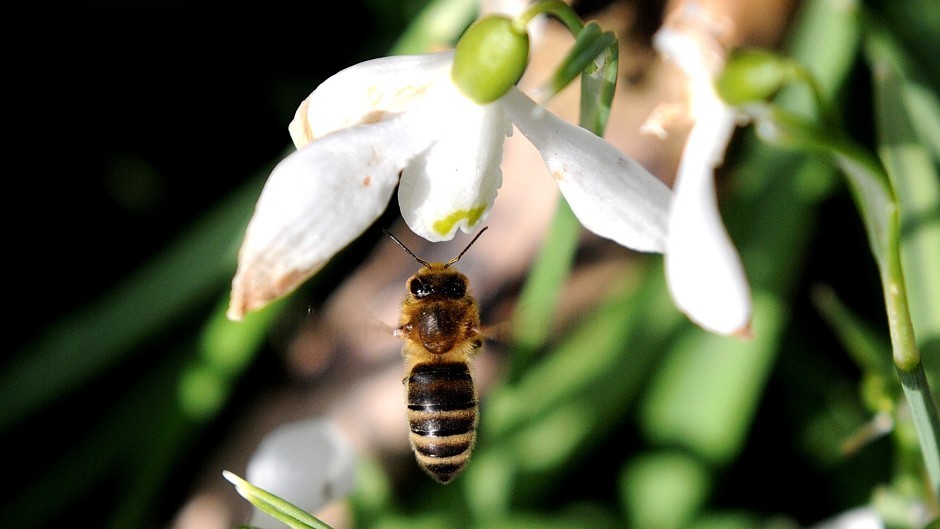A new study has revealed the differing impact of the three banned neonicotinoid insecticides on bee populations.
The research, which was carried out by scientists at the University of Dundee and the University of St Andrews, has revealed that one of the banned neonicotinoid substances does not pose the same risk to bee populations as the other two.
At present European regulations prevent the use of three neonicotioinds – clothianidin, imidacloprid and thiamethoxam.
A study into the effects of the three chemicals across 75 bee colonies at five different locations in Scotland has found clothianidin does not show the same detrimental effect on bee colonies as the other two substances.
Dr Chris Connolly from the university of Dundee, who is one of the leading authorities on the effects of neonicotinoids on bees, said: “There has been growing concern over the risk to bee populations from neonicotinoid insecticides and their long-term consequences to essential ecosystem services and food security.”
He said up until this research project knowledge on the risk to bees had been based on studies of imidacloprid and thiamethoxam, with the findings generally applied to clothianidin as well.
“However, in this study we have looked at the three neonicotinoids in parallel. What we have found is that imidacloprid and thiamethoxam, but not clothiandin, exhibit toxicity to bumblebee colonies when exposed at field-relevant levels,” added Dr Connolly.
“There was also further variation in the effects on bees between the three insecticides. So we can clearly see that the banned neonicotinoids are not the same, so they should be considered independently when considering risk and legislation.”
He said the findings suggested it was “premature to place a permanent ban on the use of clothianidin” but the moratorium on its sue should continue until the knowledge gaps are filled on its wider impact on other species.
The study did however confirm the threat posed to bumblebees by imidacloprid and thiamethoxam.
“We have seen further evidence to indicate the risk from these insecticides, including deficits in colony strength,” said Dr Connolly.
“Given these findings, small changes in the pesticide structure or its target site in insects are likely to be critical to risk assessment and each pesticide/insect combination needs to be considered independently – evidence should not be extrapolated to similar chemicals or insects. Real risk must be determined empirically.”
The findings of the study have been published in scientific journal Scientific Reports.
